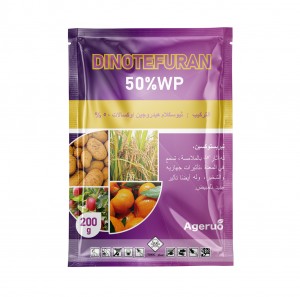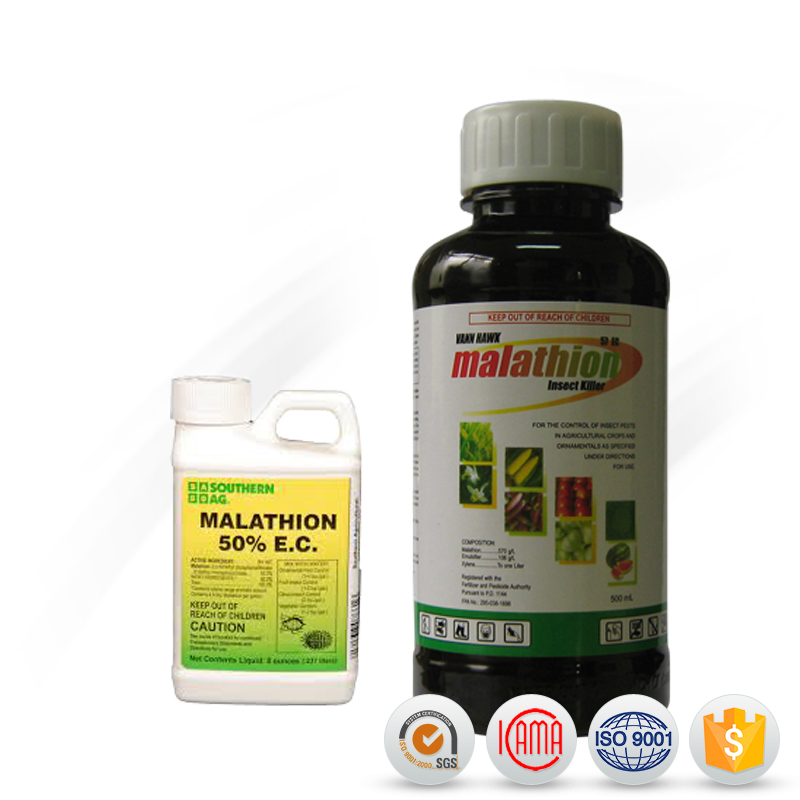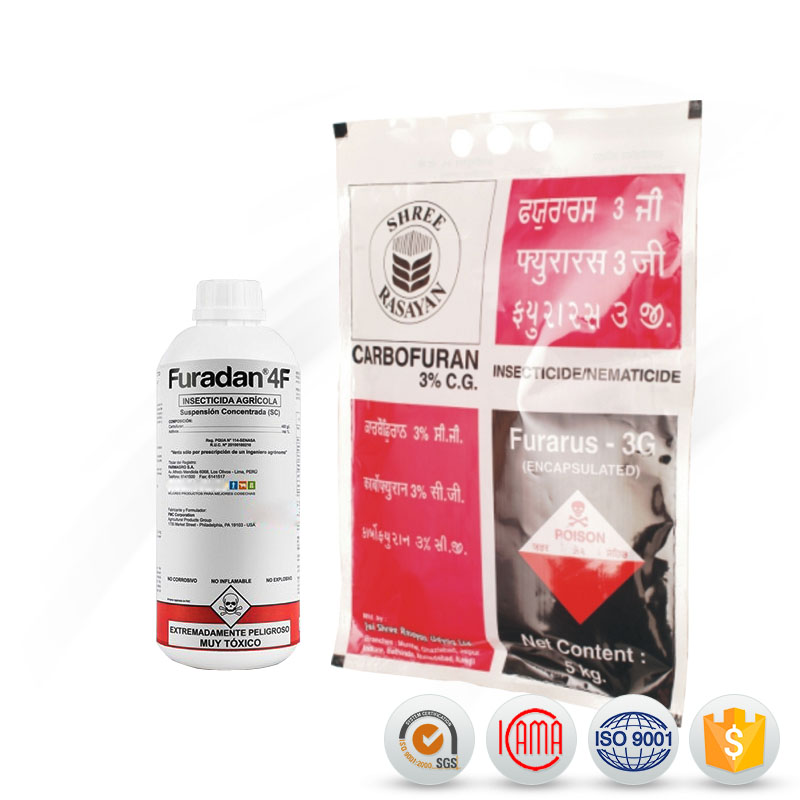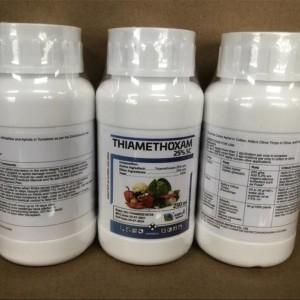What are pesticides?
Insecticides are a class of chemical substances used to control or destroy pests and protect crops, public health and stored products. Depending on the mechanism of action and the target pest, insecticides can be categorized into various types, including contact insecticides, gastric toxicity insecticides, fumigant insecticides and so on.
Main types of insecticides
Organophosphorus insecticides
Organophosphorus insecticides are a class of chemicals widely used in agriculture, public health and household pest control. They work primarily by inhibiting the activity of the enzyme acetylcholinesterase (AChE), which blocks nerve conduction in pests, leading to their death.
Advantages:
High efficiency and broad-spectrum: it has significant effect on many kinds of pests and has a wide range of application.
Fast-acting: it can kill pests quickly, with fast effect.
Low cost: relatively low production and use costs, suitable for large-scale application.
Hot Products
Trichlorfon: A highly effective broad-spectrum organophosphate insecticide commonly used to control a wide range of agricultural pests.
Malathion: with low toxicity, it is widely used for household and public health insecticides, as well as agricultural pest control.
Parathion: Higher toxicity, mainly used for agricultural pest control, but has been restricted or banned in some countries and regions.
Malathion 45%EC, 57%EC, 65%EC, 50%WP, 90%TC, 95%TC
Carbamate insecticides
Carbamate insecticides are a class of chemicals used to control a variety of pests in agricultural and domestic environments. They work by inhibiting the enzyme acetylcholinesterase, which leads to a buildup of acetylcholine at nerve synapses and neuromuscular junctions. This leads to constant muscle irritation and eventually paralysis and death of the insect.
Advantages:
High efficiency: it has strong killing effect on chewing mouthparts pests.
Quick-acting: fast-acting and effective in a short period of time.
Lower residual: faster degradation in the environment, short residual time.
Hot Products
Carbaryl (Sevin): Widely used in agriculture, home gardens, and for controlling pests on pets.
Carbaryl 50%WP, 85%WP, 5%GR, 95%TC
Aldicarb: Extremely potent, used mainly for soil pests.
Propoxur: Used in both agricultural and urban pest control, including in flea collars and ant baits.
Methomyl: Employed in agriculture for controlling insects on crops.
Methomyl 20% SL, 24% SL, 20% EC, 40% EC, 90% SP, 90% EP, 98% TC
Pyrethroid insecticides
Pyrethroid insecticides are a class of synthetic chemicals modeled after the natural insecticidal compound pyrethroid (derived from chrysanthemum). Pyrethroids are widely used because of their effectiveness, relatively low toxicity to mammals, and environmental stability. Pyrethroids attack the nervous system of insects by binding to voltage-gated sodium channels. This binding prolongs the open state of the channel, leading to repeated nerve discharges, paralysis, and ultimately death of the insect.
Advantages:
Low toxicity: relatively safe for humans and animals, suitable for household and public health use.
Quick-acting: has a rapid knockdown effect on a wide range of pests.
Stable: stable in the environment with a long duration of efficacy.
Hot Products
Permethrin: Used in agriculture, public health, and veterinary medicine.It is also found in household products like insect sprays and treated clothing It is also found in household products like insect sprays and treated clothing .
Cypermethrin: Used extensively in agricultural applications and household insecticides.
Deltamethrin: Known for its effectiveness against a wide range of insect pests in agriculture and residential settings.
Lambda-cyhalothrin: Applied in agriculture and public health programs for mosquito control.
Fenvalerate: Used in agricultural pest control.
Neonicotinoid insecticides
Neonicotinoid insecticides, commonly referred to as “neonics,” are a class of neuro-active insecticides chemically similar to nicotine. They are widely used due to their effectiveness in controlling a variety of insect pests and their systemic properties, which allow them to protect entire plants. Neonicotinoids bind to nicotinic acetylcholine receptors in the central nervous system of insects, causing overstimulation of the nervous system. This leads to paralysis and death.
Advantages:
Efficient and broad-spectrum: effective against a wide range of pests, especially piercing-sucking mouthparts.
Long duration of efficacy: Long-lasting efficacy, reducing the number of applications.
Low toxicity: safer for humans and animals, wide range of application.
Hot Products
Imidacloprid: One of the most widely used insecticides globally, applied in agriculture, horticulture, and for flea control on pets.

Clothianidin: Used in agriculture, particularly as a seed treatment to protect crops like corn and soybeans.
Thiamethoxam: Employed in agricultural settings for a variety of crops.
Acetamiprid: Used in both agricultural and residential settings.
Dinotefuran: Applied in agriculture and pest control products for household use.

Dinotefuran 50% WP, 25% WP, 70% WDG, 20% SG, 98% TC
Mechanism of action of insecticides
Insecticides produce effects on pests through various ways, mainly including:
Neurotoxicity: interferes with the nervous system conduction of pests, causing paralysis or death.
Advantages:
Efficient and quick-acting: can act quickly on the nervous system of pests and kill them quickly.
Broad-spectrum: effective against a wide range of pests, wide range of applications.
Easy to apply: most of these insecticides can be applied by spraying, fumigation and other methods.
Respiratory inhibition: destroys the respiratory enzyme system of pests, leading to asphyxiation and death.
Advantages:
Highly effective insecticide: by inhibiting the respiratory enzyme system of pests, leading to death by asphyxiation.
Low resistance: pests are less likely to develop resistance to this mechanism.
Wide range of action: can be used on a wide range of pests and their different developmental stages.
Digestive inhibition: affects the digestive system of pests, preventing them from obtaining nutrients.
Advantages:
Good selectivity: mainly acts on chewing mouthparts pests, less impact on other organisms.
Low resistance: pests are less likely to develop resistance to this mechanism of action.
Environmentally friendly: generally less polluting to the environment.
Epidermal disruption: destroys the epidermal structure of the pest, leading to loss of body fluids and death by dehydration.
Advantages:
Highly effective insecticide: by destroying the epidermis of pests, leading to loss of body fluids and death by dehydration.
Low resistance: pests are less likely to develop resistance to this physical damage.
Environmentally safe: low impact on the environment and non-target organisms, environmentally safe.
Usage of Insecticides
Application in Agriculture
Insecticides are one of the most important means of controlling pests in agricultural production. When used, suitable insecticides should be selected according to the species of target pests, their occurrence pattern and environmental conditions, and applied according to the recommended dosage and method to achieve the best effect.
Application in Family and Public Health
In the field of family and public health, insecticides are commonly used to kill mosquitoes, cockroaches and so on. Safety precautions should be taken when using them to avoid unnecessary hazards to humans, animals and the environment. It is recommended to use low-toxicity, quick-acting insecticides, and strictly follow the instructions for use.
FAQ
1. What is the mechanism of action of insecticides?
Answer: The mechanism of action of insecticides refers to how insecticides affect the physiological and biochemical processes of insects, leading to their death. Common mechanisms of action include neurotoxicity, muscle toxicity, respiratory inhibition and growth regulation.
2. What is the molecular mechanism of action of insecticides?
Answer: The molecular mechanism of action of insecticides involves the interaction of insecticide molecules with target proteins or enzymes in the insect body, thus interfering with the normal physiological functions of the insect and leading to the death of the insect. Specific mechanisms include blocking nerve conduction, inhibiting enzyme activity and interfering with hormone balance.
3. What is the importance of classifying insecticides based on mechanism of action?
Answer: Classification based on mechanism of action helps to select appropriate insecticides for integrated pest management and to avoid repeated use of the same class of insecticides, thus reducing the risk of resistance development.
Post time: May-31-2024











